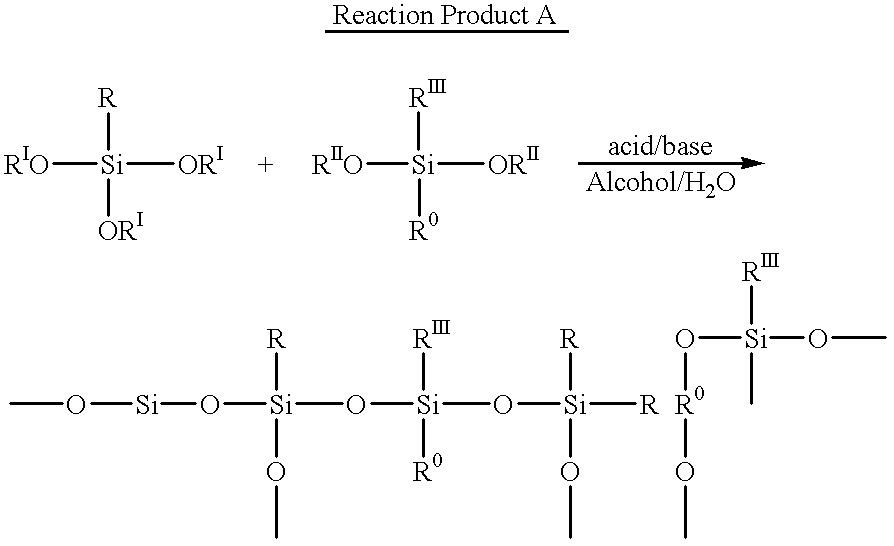Refractory oxidative-resistant ceramic carbon insulation
a technology of ceramic carbon insulation and oxidative resistance, which is applied in the direction of ceramicware, other domestic objects, transportation and packaging, etc., can solve the problems of increasing the initial structural strength characteristics of the substrate, requiring more extended periods of time for uniform pyrolysis throughout the entire monolith, and being too dense for us
- Summary
- Abstract
- Description
- Claims
- Application Information
AI Technical Summary
Problems solved by technology
Method used
Image
Examples
example 2
A piece of carbon tile (0.7058 g) was immersed in a freshly prepared solution of methyltrimethoxysilane (10.0 g), methyldimethoxysilane (2.5 g) and 1.0 N HNO.sub.3 solution (2 ml). After the solution gelled, the carbon tile was removed from the gel and dried in a vacuum oven at 70.degree. C. for 2 hours. The tile was then pyrolyzed at 1000.degree. C. for 50 min. and 1500.degree. C. for 30 min. in argon, and weighed 1.6688 g. The tile survived an oxidation exposure of 1000.degree. C. for 10 min., and weighed 1.3719 g. After another oxidation exposure at 1000.degree. C. for 30 min., the tile collapsed and the black powder weighed 1.0812 g.
example 3
A piece of carbon tile (1.0155 g, 1".times.1".times.1 / 2") was immersed in a freshly prepared solution of methyltrimethoxysilane (10.0 g), methyldimethoxysilane (2.5 g), and 1.0 N HNO.sub.3 (2.5 ml). After the reaction product gelled, excess material was removed and dried. The carbon tile was pyrolyzed at 1200.degree. C. in argon for one hour and weighed 2.9266 g. The same procedure was repeated twice and the tile weighed 5.1442 g. After a one-hour oxidation exposure at 1000.degree. C., the tile was structurally sound and weighed 4.2026 g. After another hour of oxidation exposure at 1200.degree. C., the tile was still good and weighed 4.1922 g. After an additional hour of oxidation exposure at 1500.degree. C., the tile survived, but structurally was not sound.
example 4
A piece of carbon tile (Oak Ridge) (1.9085 g, 1".times.1".times.1 / 2") was immersed in a freshly prepared solution of methyltrimethoxysilane (10.0 g), methyldimethoxysiane (2.5 g) and 1.0 N HNO.sub.3 (2.5 ml). After the reaction product gelled, and dried, the filled tile was pyrolyzed in argon at 1200.degree. C. for 60 min. and weighed 4.4018 g. The same procedure was performed two more times and a further pyrolyzed at 1350.degree. C. in argon for 30 min. The final tile weighed 7.3048 g.
The following oxidation treatments were performed on the tile from Example 4. The tile survived structurally sound and did not change its shape.
PUM
| Property | Measurement | Unit |
|---|---|---|
| temperatures | aaaaa | aaaaa |
| temperatures | aaaaa | aaaaa |
| temperatures | aaaaa | aaaaa |
Abstract
Description
Claims
Application Information
 Login to view more
Login to view more - R&D Engineer
- R&D Manager
- IP Professional
- Industry Leading Data Capabilities
- Powerful AI technology
- Patent DNA Extraction
Browse by: Latest US Patents, China's latest patents, Technical Efficacy Thesaurus, Application Domain, Technology Topic.
© 2024 PatSnap. All rights reserved.Legal|Privacy policy|Modern Slavery Act Transparency Statement|Sitemap

